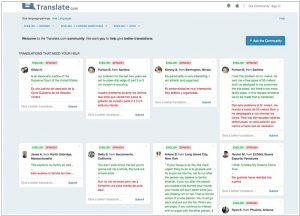Google Translate vs Translate.com
July 29, 2023 | Author: Adam Levine
20
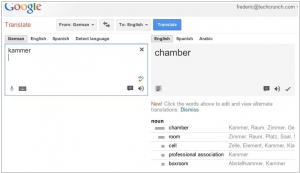
Google Translate is a free translation service that provides instant translations between dozens of different languages. It can translate words, sentences and web pages between any combination of our supported languages. With Google Translate, we hope to make information universally accessible and useful, regardless of the language in which it’s written.
See also:
Top 10 Online Translators
Top 10 Online Translators
Google Translate and Translate.com are both popular online translation services, but they have key differences. Google Translate is a widely recognized translation tool developed by Google. It offers the ability to translate text, documents, and even websites between various languages. Google Translate utilizes machine learning algorithms and a vast amount of data to provide translations quickly and efficiently. It supports a wide range of languages and offers additional features such as voice input and real-time translation through the mobile app.
Translate.com, on the other hand, is a web-based translation platform that offers similar translation services. It allows users to translate text and documents between multiple languages. Translate.com focuses on providing high-quality translations through a community-driven approach, where human translators contribute to improving the accuracy and reliability of translations. Additionally, Translate.com offers additional services such as professional translation services, website localization, and language learning resources.
See also: Top 10 Online Translators
Translate.com, on the other hand, is a web-based translation platform that offers similar translation services. It allows users to translate text and documents between multiple languages. Translate.com focuses on providing high-quality translations through a community-driven approach, where human translators contribute to improving the accuracy and reliability of translations. Additionally, Translate.com offers additional services such as professional translation services, website localization, and language learning resources.
See also: Top 10 Online Translators
Google Translate vs Translate.com in our news:
2016. Google Translate gets in-app translations on Android, offline mode on iOS
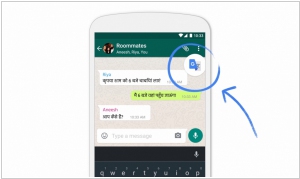
Google has introduced an update to its Translate applications for both iOS and Android devices. This latest version brings offline support to the iOS platform, a feature that has already been available on Android. Offline support proves to be particularly useful when traveling, as it eliminates concerns about a reliable internet connection. The Google team has focused on optimizing language package downloads, reducing their size by up to 90 percent. These packages now weigh approximately 25 MB and are accessible in 52 different languages. For Android users, the key addition is the Tap to Translate feature. Instead of the traditional method of copying and pasting text from apps into Translate, users can now simply copy the text, and the translation option will automatically appear. The translated content is displayed as an overlay without the need to switch between various applications.
2015. Google Translate app adds 20 more languages
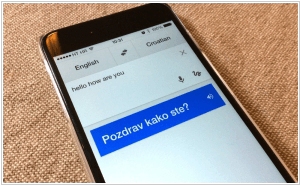
Google is expanding the capabilities of its Translate app to encompass more than twenty-five additional languages. Users will now have the ability to translate to and from English with languages such as Bulgarian, Catalan, Croatian, Czech, Danish, Dutch, Filipino, Finnish, Hungarian, Indonesian, Lithuanian, Norwegian, Polish, Romanian, Slovak, Swedish, Turkish, and Ukrainian. While Google already provides a translation feature through its website search results and directly within its Chrome browser, the demand for portable, on-the-go translation is evident. The Google Translate app offers three methods for translating text: typing the desired text, speaking the text, or using the mobile device's camera to capture and automatically translate text from signs, books, or other objects. Importantly, the visual translation feature can be used offline, eliminating the need for an internet connection.
2015. Translate.com launches enterprise platform
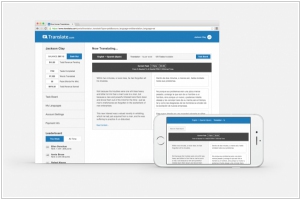
Online translation service Translate.com has introduced its enterprise platform, aiming to provide cost-effective translation services to businesses by leveraging a combination of machine translation, human translators, and editors. By employing a hybrid approach that combines AI and professional translators with the assistance of an editor, the company strives to outperform its competitors. The process involves utilizing algorithms to generate an initial, albeit rough, translation, followed by assigning portions of the text to several carefully selected professional translators who review and refine the machine translation. Additionally, the company employs a secondary layer of editors who assess the text as a whole, ensuring coherent translations across the entire document.
2015. Google Translate now does real-time voice and written text translation
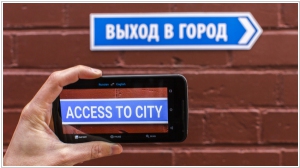
The mobile app for Google Translate on Android and iOS has received an impressive update, enhancing its capabilities even further. The latest update introduces two remarkable features: real-time voice translation and sign translation. While the app has previously offered image-based translation, these new features provide instant translation with zero delay, and the best part is that they work offline, making it incredibly useful for frequent travelers. To translate a sign, you simply need to point your camera at it, ensuring it is captured completely, and the app will promptly provide the translation. The real-time voice translation feature is equally impressive, acting as an intermediary for conversations between individuals speaking different languages. By tapping the in-app microphone once and initiating the conversation in the foreign language, the app recognizes the language and allows both parties to communicate. As the conversation progresses, the app continuously generates text-based translations in real-time, effectively breaking down language barriers.
2009. Google Translate now translates in real time
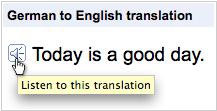
In the near future, the advancement of text and speech translation technology will become increasingly crucial for the virtual economy. Language acts as a significant barrier that hinders collaboration among talented individuals from different countries on shared projects. Therefore, we hold high hopes for Google Translate as an innovative service that breaks down this barrier. Today, Google has released a new version of the service, introducing several useful features. Firstly, the service now provides real-time translation results as you type. Secondly, when translating from any language into English, you can listen to the translated text, allowing for the practice of pronunciation. Furthermore, a Romanization feature has been added. For instance, when translating into Chinese, the translation can be read in Roman letters. Another noteworthy feature is the automatic language detection for the original text. Additionally, when you need to translate a web page, you can simply enter its URL into the text entry field.

